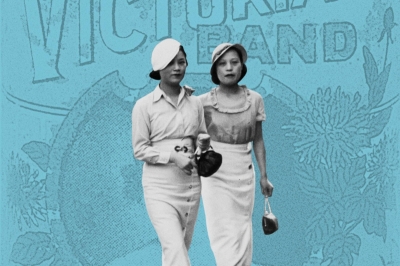While Japan's auto industry is forever being feted, the country's far-bigger pachinko business -- which takes a staggering 30 trillion yen a year in bets -- is almost entirely overlooked by society and the wider world.
So, aficionados of pachislot -- a variety of pachinko -- were heartened last month to see ads in Japan's sports papers proclaiming (between notices for "easy" consumer loans) the arrival in bookstores of the second installment in a comic-book series titled "Pachisuro de Kazoku wo Yashinau Otoko (The Man Who Supports his Family by Pachislot)."
"Slotters" waiting patiently for this follow-up to the 2003 best seller knew what to expect from publisher Byakuya Shobo's sequel: another white-knuckle, quasi-autobiographical ride through the life of comic artist, family man and, yes, professional slotter Seiichi Hoshino.
Over the latest book's 241 pages, the 36-year-old Tokyo-born artist employs humor, pathos and a hallucinatory graphic style to dramatize -- like no Gamblers Anonymous testimonial ever could -- the mania of riding your luck for a living.
Hoshino reaches out . . . and readers respond. Says editor Koichi Soboga: "They feel sympathy for him."
First, a word on pachinko and pachislot, the two core games whose consoles are found amid the blaring din and flashing lights of Japan's 16,000-odd "pachinko parlors" where some 18 million of its citizens say they go to relax . . . while dreaming of windfall gains.
The player of pachinko, a kind of upright pinball machine native to Japan, pays cash to "lease" a handful of tiny metal balls from the parlor. The balls pour into a compartment at the bottom of the console and the player turns a knob to launch them out over the panel in the hope they will drop into scoring holes triggering jackpots of new balls.
Meanwhile, as its name suggests, pachislot is more like a regular Las Vegas slot machine. Inserting leased medallions into the console, the player flicks a lever to spin three drums marked with cherries, lions, Lucky No. 7s and what have you, and then tries to line the figures up for a jackpot by pushing stop buttons at the right moment. Slotters believe their game, more than pachinko, rewards practice.
To collect pachinko or pachislot winnings (in the event that there are any) players exchange the balls or medallions for cash.
However, as even beginners know, machines are "adjusted" (some just call it "rigged"), and sometimes, to attract punters to that parlor, adjustments are in the player's favor -- which is why Hoshino gets up early every day for a shot at machines rumored to be gushers.
As the comic books make startlingly clear, every playing session is a battle fraught with doubt. While he gets rolling, Hoshino wonders nervously whether he's picked a stingy "Setting 1" machine with low jackpot odds, or a "Setting 6" that will send him home with a week's wage in his wallet.
And like the professional wrestler Hoshino deliriously imagines himself as during one of his daily stress-induced flights of fancy, he must endure physical wear and tear. In book two, he prosaically succumbs to severe lower-back pain caused by crouching at the consoles, and resentfully misses several days of play laid up on his futon.
As his otherwise uncomplaining wife one day comments, "Papa is a gambling addict." And yet as gamblers go, Hoshino is at the respectable end of the spectrum.
He knows when to cut his losses. He smokes and drinks in moderation. And above all he adores his wife and pre-school daughter, Ma-chan, taking them to Disney Land when instructed and -- daughter in his arms -- regularly giving his pachinko-loving wife a Saturday all to herself at the consoles.
"The Man Who Supports a Family by Pachislot" warms the cockles of the heart in its own gritty way. But will it ever become a classic beyond its immediate slotter fan base?
Alas, Hoshino is no Shakespeare, as the plot structure of the books' chapters reveals:
1. Hoshino claims a promising console by flinging a cigarette pack as marker.
2. Hoshino wins and soars to the heights of ecstasy. (We see him fly with cherubs, etc.) Or Hoshino loses and plunges to the depths of hell. (We see him confronted by demons, etc.)
3. Hoshino receives either a warm hug or cold shoulder from his wife, depending whether he's made a wad or blown one.
But just as Hoshino is no Bard, neither does he appear to have a Midas touch with his parlor games, and year after year slot-addicted readers must endure with him the gut-wrenching gloom of pachislot payouts forever heading South.
But therein, perhaps, lies the addictive pathos of the true gambler, a resigned soul who courts danger in the unending hope of beating the odds and savoring the enriching thrill of victory.
Hoshino won't be supporting his family on slot machines alone any more. With his comic books flying from the shelves nationwide, the whirr and clatter of the pachinko parlor is supplemented by the steady ringing of bookstore tills -- and staking his fortune on the spin of a wheel is a thing of the past. For this gambler made good, the most apt adage would seem to be: You make your own luck!




















With your current subscription plan you can comment on stories. However, before writing your first comment, please create a display name in the Profile section of your subscriber account page.